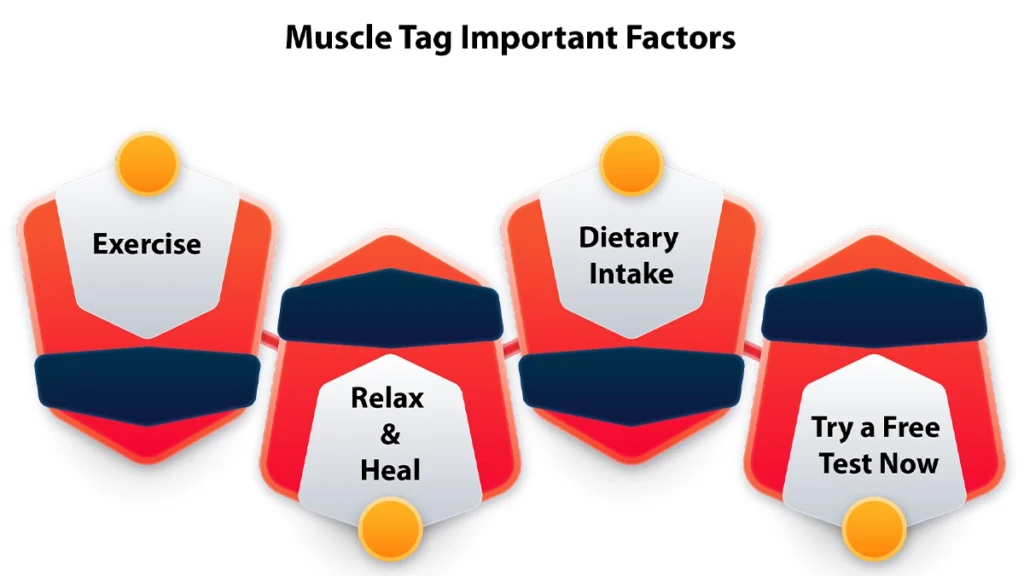Beyond just being aesthetically pleasing, muscle growth has a major positive impact on general health and well-being. This long series uses helpful guidance and scientific explanations to educate you on the intricacies of properly gaining muscle. Beyond the standard guidance on workouts and diet, you’ll acquire an in-depth grasp. The Wellhealth how to build muscle tag series will address key subjects such as training methods, the value of calmness and recovery, the role of hydration, and the necessity of using the correct form to avoid injuries. This series provides insightful information to help you strengthen and enhance your overall health, regardless of your fitness experience. If you’re serious about improving your health and strength, this series is for you. Take advantage of the chance to learn.
Recognize the Process of Building Muscle Tags


Growing larger and more compact muscular groups is known as muscle development. It involves techniques like healthy eating and muscle building. Resistance exercise, calisthenics, and weightlifting put the muscles under different types of stress or resistance, which causes the muscles to grow. Resistance workouts are key to building muscle, defined as applying continuous force to the muscles through bodyweight movements, resistance band training, or weightlifting. Muscle fibers undergo microtears that cause new fibers to grow, resulting in bigger, stronger muscles. For appropriate muscle growth, nutrition is crucial. Gaining muscle mass is made easier by consuming the correct amount of protein. A well-balanced diet includes vitamins, minerals, fats, and carbs.
WellHealth Build Muscle Tag Important Factors:


The following factors are essential for building muscle:
Exercise
Proper exercise is essential to building muscle and achieving the required outcomes securely and efficiently. Muscle growth requires a sufficient exercise of the appropriate muscle group. This includes calisthenics, weightlifting, and strength training. When enough rest and a healthy diet follow a muscular injury, it creates new muscle fibers. A well-organized training program is the secret to establishing the ideal growth schedule. To gain muscle, each muscle group must be worked twice a week. Training needs to be designed for maximum growth and to reduce the possibility of harm. It should consider pre-existing medical issues, goals, age, and fitness level. Success requires a customized training program to meet your goals and talents.
Dietary intake
Even the most intense exercise regimen cannot produce the desired outcomes without a good diet. Since protein contains the amino acids required to make muscle, it is the basic component of muscles. It takes more than one burn to grow muscle. Carbohydrate intake before and after exercise can enhance energy levels and promote muscle repair. Hormone synthesis involves fats. Both general health and muscle function need to stay well hydrated. For both general health and muscle growth, a well-balanced diet is essential. It’s advised to focus on full, natural foods and avoid processed foods and excessive sugar.
Relax and Heal:
A highly important part of building muscle is rest. Strength training is responsible for the micro tears in muscle fibers. Sleeping enough allows the injured fibers to recover, which leads to strong muscle growth. Resting properly keeps the body’s hormones balanced, which protects the body’s general ability to function. Also, rest promotes muscle growth, energy restoration, and injury prevention. Through the Muscle Protein Synthesis (MPS) method, your body creates and repairs muscle tissue closely correlated with rest. MPS is increased during relaxation and healing, especially during sleeping. Getting enough sleep is necessary to proceed as best as possible.
Try a free test now
A key concept in muscle building that increases muscle mass and strength is gradual loading. One can achieve it using heavier dumbbells, increasing the weight plates on a barbell, modifying the settings on exercise machines, or using resistance straps with increased tension levels. Increased muscular density and quality from progressive loading results in firmer, better-defined muscles that enhance the body’s visual appeal. This method helps with strength development along with muscular growth. As muscles adjust to the stress they experience, we will experience a phase in our growth if we stick to regular resistance and workout routines without raising the bar. Gradual overload helps ensure growth and breakthrough levels. To ensure long-term progress, the training program must include progressive overload. This idea helps with muscle growth and flexibility.
Wellhealth How to Build Muscle Tag: Difficulties and Solutions:


Every stage of muscle building involves dedication. Patience and discipline are the key factors in growing muscle. Building muscle is a difficult task that presents multiple challenges, such as:
- Nutrition: Sticking to a proper diet is the most difficult part of growing muscle. Maintaining a suitable and balanced diet over time is challenging. The diet needs to be low in junk food and high in vitamins, healthy fats, carbs, and protein.
- Consistency: It takes dedication and persistent work to gain muscle. Meal and exercise skips may hamper the building of muscle.
- Ineffective: One of the most annoying issues is reaching a point where progress stops. This can occur when your body adjusts to your present training program, and you need to switch up your workouts, techniques, or level of intensity to keep improving.
- Time Administration: Although developing muscle takes time, many people desire instant benefits. It can be frustrating to see slow progress, but patience is key.
- Excessive training: Over activity or inadequate rest can cause overtraining, leading to exhaustion, a drop in performance, and even injury.
- Genetics: The rate and amount of muscle mass that a person can gain depends on their genetics. Some people could find it difficult, but others might have a genetic tendency for greater muscular growth.
- Make a well-organized training schedule: Create a well-organized workout schedule that includes more resistance, a variety of workouts, and an organized strategy for exercising the various muscle groups.
- Supplements: If you consume supplements under a doctor’s supervision that support the goals, consider branched-chain amino acids, protein powder, and creatine.
Summing Up:
Gaining muscle is a path to better health, not just a matter of appearance. We delve deeply into the science while offering helpful advice to help you understand nutrition and exercise beyond the basics. The wellhealth how to build muscle tag covers important topics such as good techniques to avoid injuries, rehabilitation, hydration, and training methods. No matter how fit you are, this series gives you the tools to reach your goals and make sound choices.


Leave a Reply